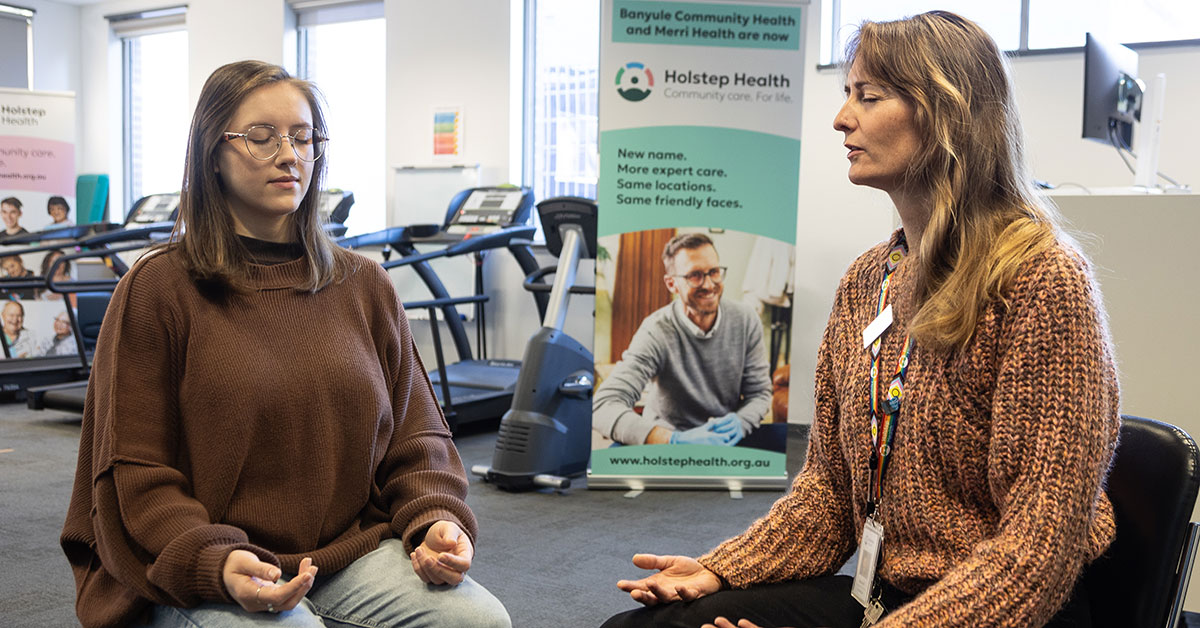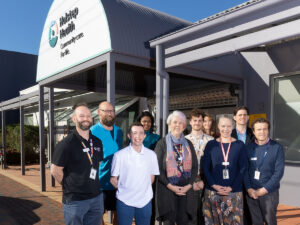
Despite seeing physiotherapists, sports physicians and other health professionals, Amanda suffered from debilitating pain for 10 years before a new GP referred her to Holstep Health’s Chronic Pain Service.
The referral changed her life for the better, transforming her pain into a manageable condition that no longer defined her.
Holstep Health, formed in 2024 from the amalgamation of Merri Health and Banyule Community Health, has clinics in multiple locations through the western and northern suburbs but most of the chronic pain patients are seen at the Brunswick and Coburg sites.
Although most services acknowledge that chronic pain arises from complex physical, psychological and social causes, Holstep’s service focuses on “pain reprocessing therapy” or PRT – reprogramming the brain to recover from chronic pain.
Through group classes and individual sessions with a pain clinician, Amanda learned to distinguish between biomechanical pain and pain arising from other factors. Being able to discern which was which gave her some measure of control.
She said it helped her realise that her “body was not my enemy”.

“I didn’t need another person telling me about my posture,” she said.
“I didn’t need another person telling me about how to do squats correctly. What I did need was somebody telling me when those things are going to be helpful and when they’re not.
“And when to look at alternatives, when to look at the stress that I might be holding in my body, for instance.’’
Amanda added she no longer feels frustrated and fearful every time she has pain.
“Not only has it helped the pain improve but it’s helped me feel less stress around it,’’ she said.
Pain is termed “chronic” if it lasts for longer than three months. One in four Australians will experience it, said Gillon Duguid, Holstep’s Manager, Prevention and Complex Care.
Many sufferers find it difficult to access help, often facing long waiting lists for hospital pain clinics.
Since 2020, North Western Melbourne Primary Health Network has commissioned Holstep Health to trial a better alternative for people like Amanda.
One of the organisation’s interdisciplinary team of specialists, pain physiotherapist Nicole Moore, said the default setting in chronic pain treatment has been “management”. She shies away from that term because, she said, “we can do better than that.’’
She says PRT isn’t a miracle cure. It’s important clients have enough stability in their life to engage with it.
“It’s not a passive ‘here take this pill and you’ll be fine’ approach – so that’s the thing to keep in mind when you’re trying to change the brain,’’ she explained. “It takes a willingness and a certain amount of psychological flexibility”.
“If someone’s really distressed and has a lot of active things in their life … they’re trying to manage like court cases and break-ups … pain is a real problem. But they can’t even talk about their pain because all these other things in their life are just too big.”
Nicole said PRT is becoming better known.
“I’m passionate about this reframe of pain care and I’m pleased to learn that this work is catching on in tertiary hospital services too,” she explained.
“People, clients are starting to come into pain services and say ‘I want pain reprocessing therapy’.’’
Gillon Duguid said that the patients being referred to them are more complex, and with more severe mental health comorbidity, than on average across services in Australia. Nevertheless, data showed that most were able to benefit from the service’s approach.

“The program has been instrumental in supporting the community and clients with chronic pain access services which help change their symptoms and help them live independently in the community again,’’ he said.
NWMPHN funding has allowed the organisation to turn its original small scale pain management program into a fully integrated specialist service, recruiting physiotherapists, psychologists, occupational therapists, and medical specialists as well as support staff to coordinate care and appointments.
Christine Kendall, the Prevention and Chronic Illness Care team leader, said the specialist clinicians had upskilled Holstep Health’s other staff to better support individuals with chronic pain.
“It’s also enabled us to provide education to GPs and other health services such as asylum seeker centres in the area and build those partnerships with the tertiary service as well, because we are able to offer that holistic approach with both the individual and the group programs,” she explained.
“We can then also step that up to tertiary services and vice versa.’’
Data from Holstep’s client information system submitted to the national electronic Persistent Pain Outcomes Collaboration, hosted by the University of Wollongong, show that almost 92 per cent of patients a year have had some improvement overall. Three-quarters improved their physical ability.
The service was a finalist in the Victorian Healthcare Awards in 2023 and 2024. The 2024 citation noted that it had improved long-term health and wellbeing outcomes and reduced hospital waitlist pressure.
Holstep’s chronic pain service accepts referrals from GPs for adult residents of Hume, Darebin, Merri-bek, Yarra, Melbourne, Moonee Valley and the Macedon Ranges. Referral information is available here.
| Factbox – consumers
A May 2020 Australian Institute of Health and Welfare report found that:
|






